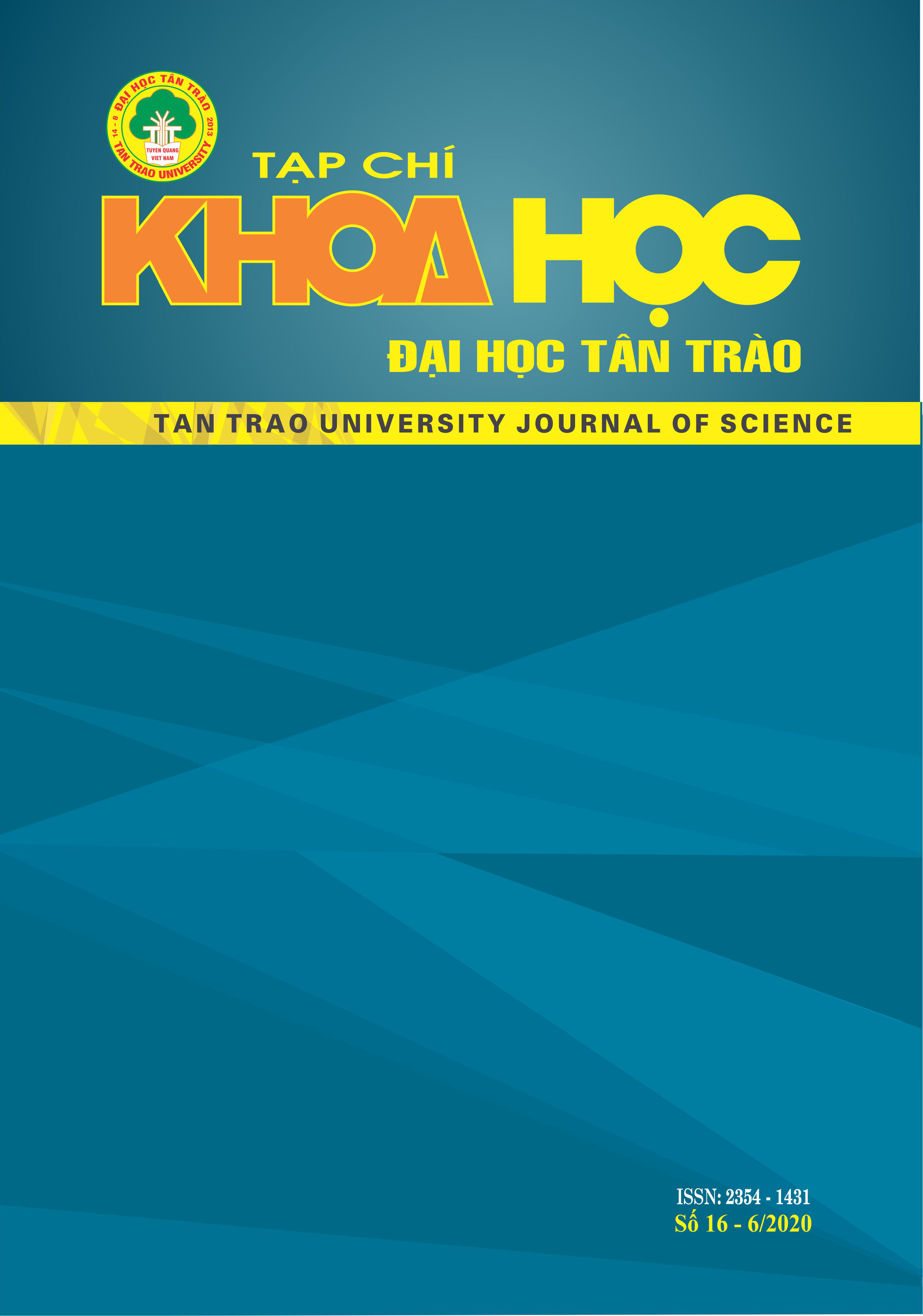MỘT SỐ PHƯƠNG PHÁP RÈN KỸ NĂNG TẬP ĐỌC NHẠC CHO HỌC SINH KHỐI TRUNG HỌC CƠ SỞ TRƯỜNG PHỔ THÔNG TUYÊN QUANG
DOI:
https://doi.org/10.51453/2354-1431/2020/322Từ khóa:
áºp Ä‘á»c nhạc; Há»c sinh Trung há»c cÆ¡ sở; Giáo viên; phÆ°Æ¡ng pháp dạy há»c; kỹ năng táºp Ä‘á»c nhạc.Tóm tắt
Để đạt được mục tiêu và nhiệm vụ của môn Âm nhạc ở trường Trung học cơ sở (THCS) cần tạo nên một “Trình độ văn hoá Âm nhạc nhất định”, bao gồm sự hiểu biết, năng lực thực hành tối thiểu và năng lực cảm thụ âm nhạc cho học sinh. Để đạt được điều đó, đòi hỏi người giáo viên đứng lớp phải có sự đầu tư thời gian để tìm tòi, nghiên cứu nhằm tìm ra phương pháp tối ưu trong quá trình tổ chức hoạt động học tập cho các em. Hiện nay, hầu hết học sinh khối THCS trường Phổ thông Tuyên Quang (TSE) học phân môn Tập đọc nhạc (TĐN) chưa tốt, hạn chế về kỹ năng TĐN cơ bản. Bài viết này đưa ra một số phương pháp rèn kỹ năng TĐN cho học sinh, bao gồm các kỹ năng: đọc cao độ, thể hiện trường độ và tiết tấu; gõ phách; đọc có sắc thái… nhằm giúp học sinh khối THCS trường Phổ thông Tuyên Quang học phân môn TĐN hiệu quả hơn.
Tải xuống
Tài liệu tham khảo
1. Bộ Giáo dục và Đào tạo ((2019), Âm nhạc và Mĩ thuật 6, Nxb Giáo dục Việt Nam.
2. Bộ Giáo dục và Đào tạo ((2019), Âm nhạc và Mĩ thuật 7, Nxb Giáo dục Việt Nam. H.T.T.Linh/ No.16_June 2020|p.55-60
3. Bộ Giáo dục và Đào tạo ((2019), Âm nhạc và Mĩ thuật 8, Nxb Giáo dục Việt Nam.
4. Bộ Giáo dục và Đào tạo ((2019), Âm nhạc và Mĩ thuật 9, Nxb Giáo dục Việt Nam.
5. Đắc Quỳnh (2003), Xướng âm Tập I, Xướng âm Tập II, Trường Cao đẳng Sư phạm Nhạc họa TW.
6. Hoàng Long, Hoàng Lân (2010), Phương pháp dạy học âm nhạc, Nxb Đại học Sư phạm;
7. Hoàng Long, Hoàng Lân (2012), Giáo trình Âm nhạc và phương pháp dạy học âm nhạc, Nxb Đại học Sư phạm;
8. Phạm Tú Hương (2004), Giáo trình Lý thuyết âm nhạc cơ bản, Nxb Đại học Sư phạm Hà Nội;
9. Trịnh Hoài Thu (2011), Phương pháp dạy học Ký xướng âm trong đào tạo giáo viên Âm nhạc phổ thông, Nxb Âm nhạc, Hà Nội;
Tải xuống
Đã Xuất bản
Cách trích dẫn
Số
Chuyên mục
Giấy phép

Tác phẩm này được cấp phép theo Giấy phép Quốc tế Creative Commons Attribution-ShareAlike 4.0 .
Bài báo được xuất bản ở Tạp chí Khoa học Đại học Tân Trào được cấp phép theo giấy phép Ghi công - Chia sẻ tương tự 4.0 Quốc tế (CC BY-SA). Theo đó, các tác giả khác có thể sao chép, chuyển đổi hay phân phối lại các bài báo này với mục đích hợp pháp trên mọi phương tiện, với điều kiện họ trích dẫn tác giả, Tạp chí Khoa học Đại học Tân Trào và đường link đến bản quyền; nêu rõ các thay đổi đã thực hiện và các nghiên cứu đăng lại được tiến hành theo cùng một bản quyền.
Bản quyền bài báo thuộc về các tác giả, không hạn chế số lượng. Tạp chí Khoa học Tân Trào được cấp giấy phép không độc quyền để xuất bản bài báo với tư cách nhà xuất bản nguồn, kèm theo quyền thương mại để in các bài báo cung cấp cho các thư viện và cá nhân.
Mặc dù các điều khoản của giấy phép CC BY-SA không dành cho các tác giả (với tư cách là người giữ bản quyền của bài báo, họ không bị hạn chế về quyền hạn), khi gửi bài tới Tạp chí Khoa học Đại học Tân Trào, tác giả cần đáp ứng quyền của độc giả, và cần cấp quyền cho bên thứ 3 sử dụng bài báo của họ trong phạm vi của giấy phép.






